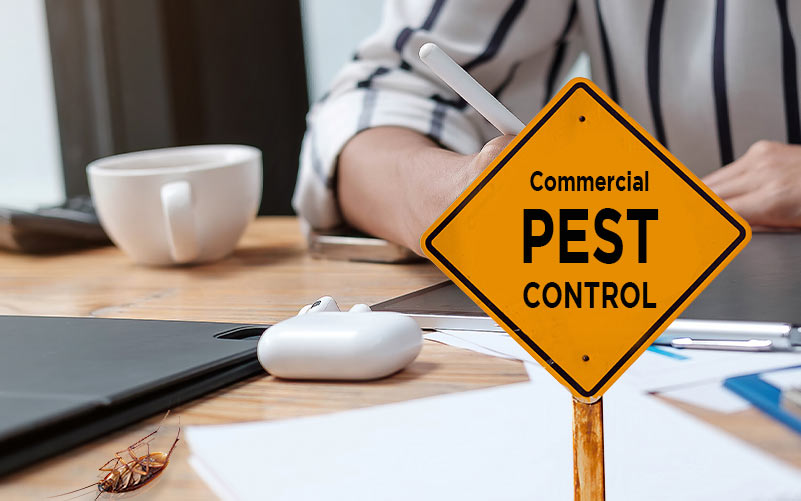A1 Bed Bug Exterminator Charlotte - Specialized Bed Bug Elimination
A1 Bed Bug Exterminator Charlotte - Specialized Bed Bug Elimination
Blog Article
Bed Pest Treatment Malfunction: Contrasting Chemical Vs. Non-Chemical Solutions
In the world of bug control, particularly when dealing with the relentless concern of bed insects, the option between chemical and non-chemical therapy options can be a crucial one. Both approaches offer unique benefits and drawbacks, influencing variables such as performance, safety and security considerations, and overall price. By checking out the nuanced details of each technique, a clearer understanding of which path to pursue in resolving a bed bug problem can be attained.
Effectiveness of Chemical Treatments
Chemical therapies for bed pest invasions have been extensively acknowledged for their powerful and quick effectiveness in getting rid of these parasites. When taking into consideration the effectiveness of chemical treatments, it is critical to understand that they can offer a comprehensive and quick remedy to a bed pest issue. Specialist exterminators often depend on insecticides to target bed insects at numerous stages of their life process, including eggs, fairies, and grownups. These chemicals commonly function by interrupting the bed insects' worried system, causing paralysis and eventual fatality.
In addition, chemical therapies have the advantage of using residual effects, meaning that they can remain to remove bed pests even after the preliminary application. This residual action is particularly useful in combating any potential re-infestations. Furthermore, the rapid activity of chemical treatments can bring alleviation to people facing severe bed insect invasions, permitting them to gain back control of their living rooms rapidly.
Security Worries With Chemical Solutions
One important facet that calls for mindful consideration when using chemical services for bed bug treatment is ensuring the safety of residents and the environment. Exposure to certain chemicals used in bed pest therapies can lead to respiratory concerns, skin inflammation, or various other negative reactions, specifically in individuals with pre-existing problems or sensitivities.
Moreover, the environmental impact of chemical services is one more substantial factor to consider. Some pesticides made use of in bed pest therapies may be harmful to valuable pests, wildlife, and ecosystems if they leach into the soil or water supply. It is important to use chemical treatments sensibly, complying with security standards, and thinking about much less harmful choices to mitigate these risks and ensure the reliable and secure monitoring of bed pest problems.
Advantages of Non-Chemical Strategies
Considering the prospective safety issues and environmental influence related to chemical services for bed pest therapy, checking out non-chemical strategies presents a promising choice with several unique advantages. Non-chemical methods supply a much safer alternative for families, specifically those with people, family pets, or children conscious severe chemicals. These strategies remove the risks of direct exposure to harmful compounds, minimizing the possibility for damaging health effects. Furthermore, non-chemical therapies are environmentally pleasant, as they do not add to air or water contamination, making them a sustainable selection for bug control.
In addition, non-chemical services can be reliable in targeting bed insects, consisting of hard-to-reach areas where chemical therapies may not permeate. Techniques such as warm therapy, vacuuming, vapor cleaning, and bed mattress coverings give detailed her response obliteration without making use of harmful chemicals. In addition, non-chemical methods can be less disruptive, calling for minimal prep work and enabling quicker reentry into treated areas. Generally, choosing for non-chemical bed bug therapy approaches not just prioritizes security and environmental management yet likewise guarantees effective and extensive pest control.
Limitations of Non-Chemical Treatments

In addition, non-chemical treatments often call for several applications to click to read more attain effective removal. This can be time-consuming and may not constantly guarantee complete elimination of all bed insects and their eggs, specifically in hard-to-reach or covert areas.
In addition, the success of non-chemical treatments greatly relies upon appropriate implementation and thoroughness, which can be testing for people without professional expertise. Insufficient application of non-chemical approaches might lead to incomplete obliteration, bring about persistent infestations and the need for added therapies.
For that reason, while non-chemical therapies have their advantages, it is crucial to acknowledge these limitations and consider them when figuring out the most reliable method for taking care of bed insect problems.
Expense Comparison: Chemical Vs. Non-Chemical Options
Given the restrictions linked with non-chemical therapies, a necessary element to assess in the context of bed insect management is the cost contrast in between chemical and non-chemical options. In comparison, non-chemical treatments like warm treatment or vapor can be much more pricey, with prices varying from $1,000 to $6,000 for an entire home. While the initial cost of chemical therapies might appear reduced, numerous treatments might be required to completely eliminate the invasion, potentially raising the general price.
Verdict

Considering the potential safety and security worries and environmental influence linked with chemical options for bed pest treatment, exploring non-chemical approaches presents a promising option with numerous distinctive benefits.Given the constraints associated with non-chemical therapies, an essential aspect to review in the context of bed pest administration is the expense comparison between chemical and non-chemical choices. In contrast, non-chemical therapies like warm treatment or vapor can be a lot more expensive, with try this site prices ranging from $1,000 to $6,000 for an entire home. While the first expense of chemical treatments may appear reduced, numerous therapies may be required to completely get rid of the problem, possibly enhancing the overall price.In final thought, when contrasting chemical and non-chemical bed pest therapy options, it is vital to think about performance, security, advantages, limitations, and expense.
Report this page